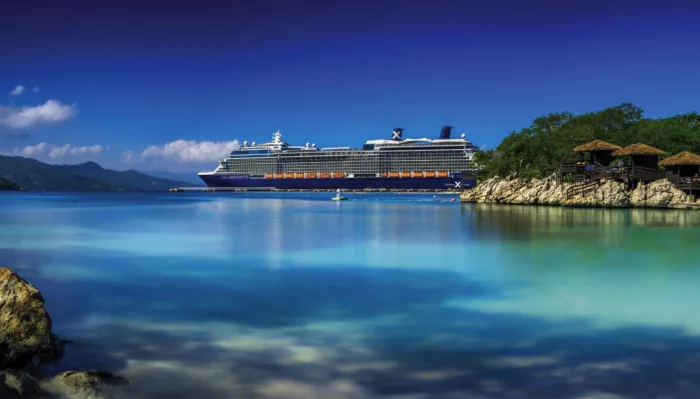
Celebrity Cruises
Captain Kate McCue has come to symbolise the modern approach of Celebrity Cruises. The Instagram-famous American skipper - accompanied by her cat Bug Naked - has taken the helm of the line's latest ship: Celebrity Beyond.
Other ships in the fleet have been overhauled and given new facilities, while Celebrity also launched its 100-passenger Galapagos expedition ship, Celebrity Flora, and announced a new partnership with wellness guru Gwyneth Paltrow.
2852
Passengers
1000
Crew
2010
Launched
2021
Last refit
121878t
Tonnage
317m
Length
37m
Width
24kts
Speed
13
Decks
USD
Currency
Cruise Itinerary
Day 1
Amsterdam, Netherlands
Day 2
Dover, England
Day 3
Le Havre, France
Day 4
At Sea
Relax and make the most of the myriad of facilities available on board the ship, from fantastic entertainment to delicious and diverse dining options.
Day 5
Bilbao, Spain
Day 6
At Sea
Relax and make the most of the myriad of facilities available on board the ship, from fantastic entertainment to delicious and diverse dining options.
Days 7 - 8
Lisbon, Portugal
Day 9
Cádiz, Spain
Day 10
Gibraltar, Gibraltar
Day 11
At Sea
Relax and make the most of the myriad of facilities available on board the ship, from fantastic entertainment to delicious and diverse dining options.
Day 12
Palma de Mallorca, Spain
Day 13
Barcelona, Spain

Day 1
Amsterdam, Netherlands

Day 2
Dover, England

Day 3
Le Havre, France

Day 4
At Sea

Day 5
Bilbao, Spain

Day 6
At Sea

Days 7 - 8
Lisbon, Portugal

Day 9
Cádiz, Spain

Day 10
Gibraltar, Gibraltar

Day 11
At Sea

Day 12
Palma de Mallorca, Spain

Day 13
Barcelona, Spain
Ship Details


Celebrity Cruises
Celebrity Eclipse
Unwind in stylish accommodations, including Concierge Class and our spa-inspired AquaClass® with exclusive dining at Blu. And, the ultimate in luxury, exclusive sanctuary, The Retreat® which includes private restaurant dining and 24/7 lounge.
Cabins
All Prices



















